Author(s): Gerald C Hsu
In this paper, the author provides evidence on the partial “self-recovery” of the insulin regeneration capacity in his pancreatic beta cells. He used data from his meals containing rice and toast (high carbohydrates “starchy” foods) for 5+ years from 5/1/2015 to 7/7/2020. These 196 selected meals with rice and toast have only occupied 3% of his total 6118 meals (including some snacks) during this period. This fact of avoiding high starchy food is due to his concerns of his severe diabetes conditions.
By comparing his two average PPG values from “starchy” foods, rice and toast, he is able to calculate and list the PPG reduction rate over 5.1 years
The author spent 12-months to research the self-recovery of his pancreatic beta cells via different entry-points and various methods.
He has written a total of 11 medical articles regarding this specific subject (see References). The results from this specific article uses “starchy” food as another entry point that was confirmed again by the results of his previous research finding. His pancreatic beta cells appears to be self-repairing the production of insulin at an annual rate of 2.3% to 3.2%.
Although this is only a moderate improvement, it is still promising. If his self-recovery rate is 2.3% to 3.2%, for the past 5 to 7 years, then his beta cells insulin functionalities should be repaired by 12% to 22%. The “glucose improvement” for past 5+ years based on “starchy” food is a solid fact which adds supporting evidence. In his words, the pancreatic beta cell could start its own “selfrepair” process with a proper “incentive” or “push”.
Most medical professionals state that diabetes is an “irreversible” or “non-curable” disease; however, the author has proven that not only has he stopped the “deterioration” of his T2D conditions, he may have “reversed” his damaged pancreatic beta cells to some degree. Hopefully, by sharing his lifestyle program, research methods, and encouraging results, other T2D patients can also be motivated to achieve similar positive results on their battles against diabetes and its complications.
In this paper, the author provides evidence on the partial “selfrecovery” of the insulin regeneration capacity in his pancreatic beta cells. He used data from his meals containing rice and toast (high carbohydrates “starchy” foods) for 5+ years from 5/1/2015 to 7/7/2020.
These 196 selected meals with rice and toast have only occupied 3% of his total 6118 meals (including some snacks) during this period. This fact of avoiding high starchy food is due to his concerns of his severe diabetes conditions.
The author has had T2D for 25 years since 1995. Starting in 1998, he took three different kinds of diabetes medications to control his elevated glucose levels, where his average was 280 mg/dL and peaked at 396 mg/dL. For the last 20 years, he has suffered from many complications from his diabetes, including five cardiac episodes, foot ulcer, neuropathy, bladder infection, renal complications, diabetic retinopathy, and hyperthyroidism; however, he did not have a stroke.
In 2013, he started different stages to reduce the dosages from his three prescribed diabetes medications. On 12/8/2015, he finally ceased his last one, the classic metformin HCL. For the past 4.5years, his body has been free of any medications.
Since then, he has completely relied on a stringent lifestyle management program he developed in order to control his severe diabetes and its various complications. As a result, his HbA1C has been reduced from 10% in 2010, while taking medications, to 6.4% in 2020, without medications (Figure 1).
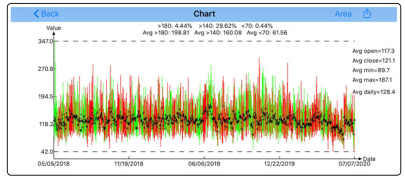
Figure 1: HbA1C results
Thus far, he has kept ~2 million data of his own medical conditions and lifestyle details. He has also developed a sophisticated computer software by using big data analytics, artificial intelligence (AI), physics concepts and principles, mathematics equations and formulas, as well as some practical engineering modeling techniques to analyze, process, manage his massive health data, and even predict future development of his four biomedical key variables, i.e. weight, PPG, FPG, HbA1C.
To summarize prominent findings from the glucose data analysis based on his own observations for the past 6 to 8 years, he has noticed two “opposite” phenomena regarding his glucoses. The first observation is that, his peak PPG value occurred around 60- 75 minutes after the first bite of his meal, occasionally reached to above 200 mg/dL to near 400 mg/dL when he did not follow his stringent diet and exercise guidelines. Specifically, his glucose level would be above 200 mg/dL when he ate “starchy” high-carb food and above 300 mg/dL when he ate food with high sugar content. This means that his damaged pancreatic beta cells situation still exits. His high peak glucose occasionally showed up when he was not careful about his diet. The second observation is that, since 5/5/2018, his PPG values were only 4% above 180 mg/dL and 0.4% below 70 mg/dL (Figure 2). This information explicitly showed the recent situation of his T2D conditions in terms of insulin resistance or lack of insulin production supply. In his second observation, he noticed that his tolerance of “starchy” food seemed to improve in recent years, especially during 2019-2020.
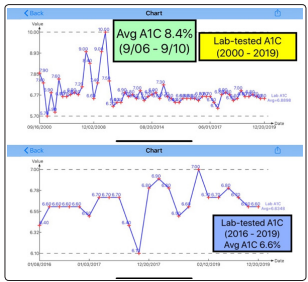
Figure 2: Candlestick Chart of PPG (5/5/2018 - 7/7/2020)
After eating the same type and amount of “starchy” food, his peak glucose levels only reached ~150 mg/dL with an even lower average PPG. From checking his massive data of meals and PPG values since 5/1/2015, his natural health state of pancreatic beta cells seemed to be on a “slow” self-recovery path, even though the recovery rate is on a smaller scale. This improvement on his diabetes condition can be observed by using a candlestick chart of his CGM sensor collected data against his earlier available scattered hyperglycemia data (Figure 2). Please note that the CGM device became available in the US in early 2018.
Recently, he read an article online, “Diabetes: Can we teach the body to heal itself?” on Medical News Today, which was published on January 8, 2019.
“A new study by researchers from the University of Bergen in Norway, Maria Cohut, Ph.D. and Luiza Ghoul, suggests that, with just a small “push,” we may be able to train the body to start producing adequate levels of insulin once more, on its own. The researchers were able, for the first time, to uncover some of the key mechanisms that allow cells to “switch” identity, looking specifically at pancreatic alpha- and beta-cells in a mouse model. They found that alpha-cells respond to complex signals they receive from neighboring cells in the context of beta-cell loss. Approximately 2 percent of alpha-cells can thus “reprogram” themselves and start producing insulin. By using a compound able to influence cell signaling in the pancreas, the researchers could boost the number of insulin-making cells by 5 percent.
The author’s research methodology is a “math-physical medicine” approach, rather than a “biochemical medicine” approach as mentioned in the article above. Furthermore, he uses his own body, a “human model” instead of a “mouse model” cited in Norway’s lab test. He feels that through his small “push” via lifestyle changes, he was be able to create certain biochemical chain effects which would cause his body to start producing more and adequate levels of again, on its own. In the author’s own words, the pancreatic beta cell could start its own “self-repair” process with a proper “incentive” or “push”
Math-physical medicine approach has three key steps of research methodology. For the first step, it starts with observing physical phenomena of some prominent biomedical characteristics from collected data. All of the biological and chemical work including their actions and chain reactions in the human body and organs would show or expose some sort of physical phenomena in terms of exterior appearances, because both biology and chemistry are applied physics. In the second step, he then forms a hypothesis from these specific physical observations based on physics theories or concepts. The third step, if possible, he utilizes either existing mathematical equations (along with their given constraints) or derives his own mathematical equations or formulas with some defined or given constraints based on both original physics concept and engineering models (engineering is applied physics and physics is applied mathematics), in order to verify or prove his hypothesis. Finally, once his hypothesis is proven by using his collected data, he can then apply these mathematical prediction equations to recreate or predict future outcomes or reproduce the final results based on new input data. It should be noted that computer science techniques, such as AI and big data analytics, are only served as convenient and useful “tools” for his simulation model work and massive data processing
This research project started in July of 2019 and is ongoing. During this one-year period, he has already written 11 medical papers regarding the subject of insulin of beta cells [1-12]. In those papers, he described his suspicion and hypothesis regarding the probability of his pancreatic beta cells’ “self-recovery”. Now, he is using his big clinical data of meals and glucoses to look for extra evidence to support his hypothesis regarding the pancreatic “self-recovery” theory
In Figure 3, his annualized self-repair rate of pancreatic beta cells is 2.3% based on both FPG and PPG, and 2.9% based on HbA1C during the past 7 years from 2014 to 2020. By using this linear rate and over a longer period of 5 to 8 years, his pancreatic beta cells’ function should recover at a total percentage of 11%-15% to 18%-23% for 5-8 years [252] [12].
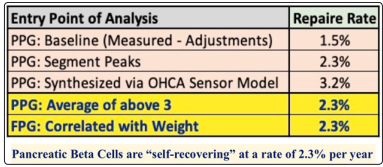
Figure 3: Summary Table of pancreatic beta cells “self-recovery” rate of 2.3% (PPG & FPG)
He chose a 5+ years period from 5/5/2015 through 7/7/2020 as his research period. On 5/1/2015, he started to collect his meals and PPG data. During this time frame, he selected two separated sub-periods for both rice meals and toast meals. He chose the second sub-period due to its observable and significant PPG improvements. In addition, both of the first and the second subperiods must contain sufficient number of meals for a reliability check.
Figure 4 depicts his PPG, carbs/sugar intake and post-meal walking steps in 90-days moving average format during the period of 5/1/2015 through 7/7/2020. The first 30 days data and curve should be ignored because of the initial instability of his data collection effort. It is obvious that his PPG decreased from 146 mg/dL to 109 mg/dL. However, from a macro-view, both of his carbs/sugar intake amount (~14 grams) and post-meal walking steps (~4,100 steps) remained at an almost constant level. From these results, he then thought what caused his PPG to drop? There are three primary factors influencing the PPG level, i.e. diet (carbs/ sugar intake), exercise (post-meal walking), and insulin from beta cells. Since diet and exercise are near-constant, by adopting a statistic method of decision making through elimination, the only remaining influential factor is “insulin”!
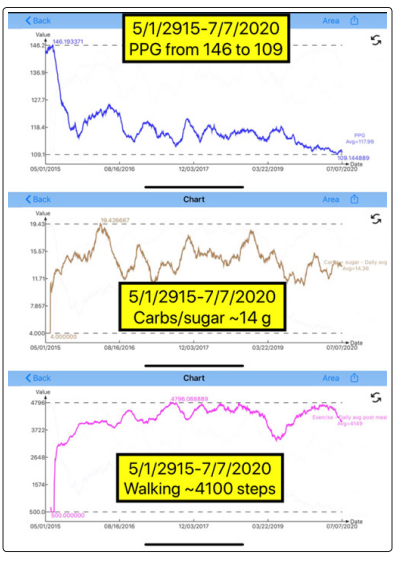
Figure 4: PPG with food and exercise (5/1/2015 - 7/7/2020)
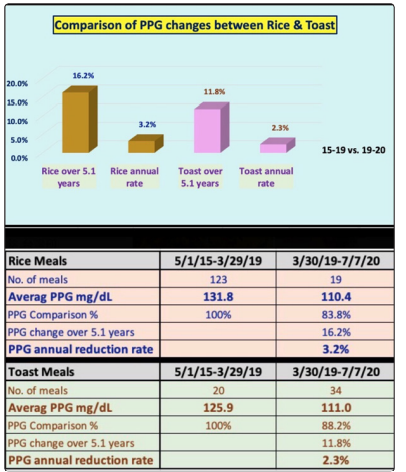
Figure 5: Data table and bar chart of comparison between Rice meals & Toast meals (5/1/2015 - 7/7/2020)
The author conducts a small cohort statistical study of researching “insulin” through investigating the relationship between meals and glucose from two meals under one environment, his own body. A cohort study is a particular form of longitudinal study that samples a cohort performing a cross-section at intervals through time. It is a type of panel study where the individuals in the panel share a common characteristic (from Wikipedia).
He uses the first sub-period from 5/1/2915 to 3/29/2019 as his baseline (i.e. defined as 100%) for comparison.
His PPG data are listed as follows:
PPG = 131.8 mg/dL (100%)
20 Toast meals:
PPG = 125.9 mg/dL (100%)
And then, he lists his meals and PPG data of the second sub-period (3/30/2019 - 7/7/2020) as follows:
PPG = 110.4 mg/dL (84%)
34 Toast meals:
PPG = 111.0 mg/dL (88%)
By comparing his two average PPG values from two “starchy” foods, rice and toast, he is able to calculate and list the PPG reduction rate over 5.1 years:
PPG dropped by 16.2%,
at an annual drop rate of 3.2%
PPG dropped by 11.8%,
at an annual drop rate of 2.3%
The results show an annual rate between 2.3% to 3.2% from a narrowly selected two specific “starchy” meals. They are compatible to his previous findings using the complete and big dataset of glucoses, including FPG, PPG, HbA1C, as identified in attached 11 reference articles.
The author spent 12-months to research the self-recovery of his pancreatic beta cells via different entry-points and various methods.
He has written a total of 11 medical articles regarding this specific subject (see References). The results of this specific article uses “starchy” food as an entry point that was confirmed again by the results of his previous research finding. His pancreatic beta cells appears to be self-repairing the production of insulin at an annual rate of 2.3% to 3.2%.
Although this is only a moderate improvement, it is still promising. If his self-recovery rate is 2.3% to 3.2%, for the past 5 to 7 years, then his beta cells insulin functionalities should be repaired by 12% to 22%. The “glucose improvement” for past 5+ years based on “starchy” food is a solid fact which adds supporting evidence. Most medical professionals state that diabetes is an “irreversible” or “non-curable” disease; however, the author has proven that not only has he stopped the “deterioration” of his T2D conditions, he may have “reversed” his damaged pancreatic beta cells to some degree. Hopefully, by sharing his lifestyle program, research methods, and encouraging results, other T2D patients can also be motivated to achieve similar positive results on their battles against diabetes and its complications.
